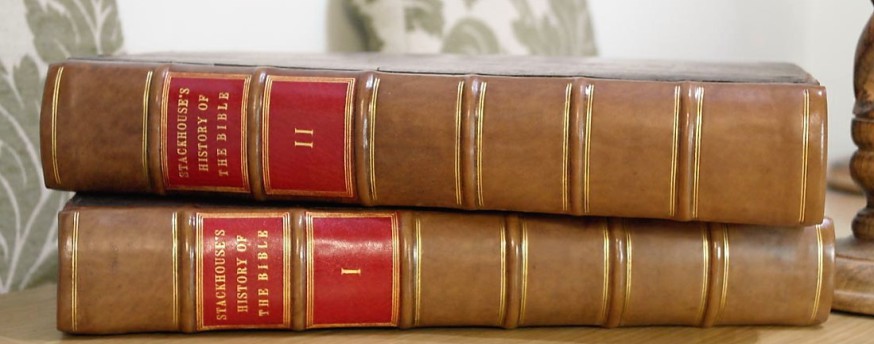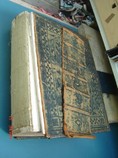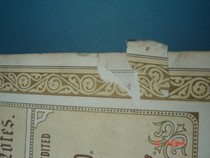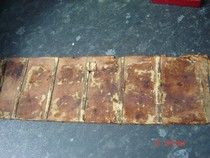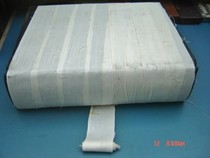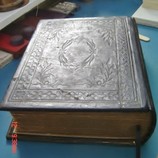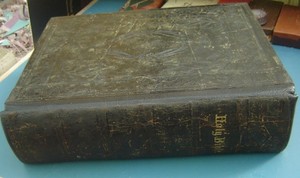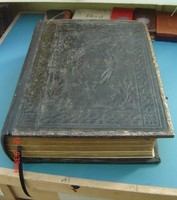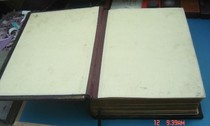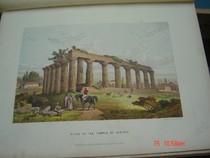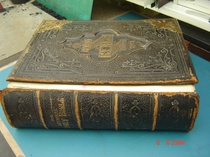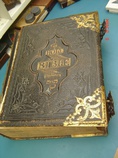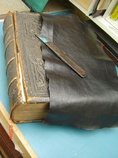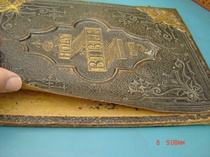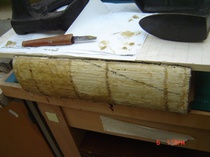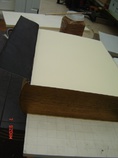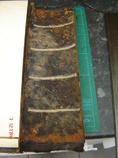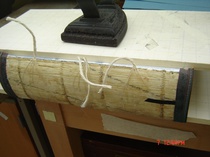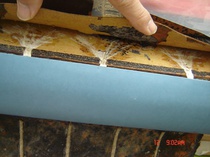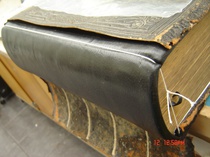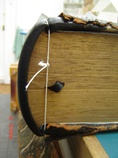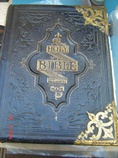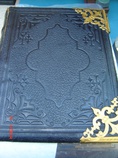Restoration of Two Victorian Bibles
The boards were detached, the spine also. Sewing was intact apart from the front seven sections, which had become loose. Endbands were missing but there was evidence of machine made type in use. The bottom board had the brass edgeing and hinged clasps missing, while the upper board still had the brass edging and catches. The surface of the leather is abraded for its age but there were no signs of "red-rot" just normal mecahnical wear. The spine had an "oxford-hollow" lining and false raised bands.
Once the leather spine was removed from the oxford hollow we needed to clean the inner surface of old linings so we could re-use it. To that end we used a dry paste to soften the linings, however we allowed the moisture to penetrate only the old linings and glue, not the leather. Once done the leather became pliable and reusable.
Here we can see the new leather spine piece coming over and tucked under the old leather boards. It is done in such a way that the old leather does not lift up or catch when the board is levered to open the book. A small amount of spirit dye was used to take out the worst abraded surfaces and then this was finished with a very thin polish of shellac.
Restoration of another Victorian Bible
The spine is being cleaned of all the old linings and glues with the use of wheat starch paste. This is to ensure we have removed the old gelatine glue which has crystallised and become brittle. Our new linings need to go back to the original spine surface to ensure good adhesion with proper flexibility.
